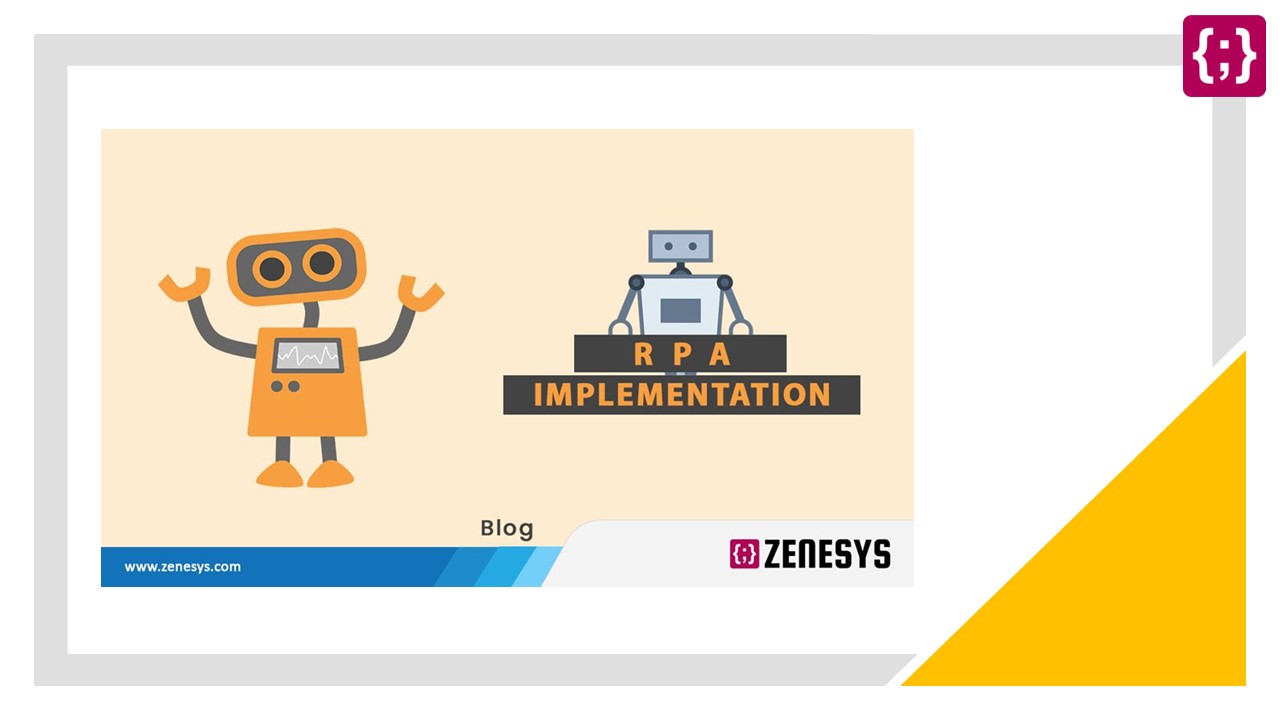Key steps to achieve successful RPA Implementation - PowerPoint PPT Presentation
Title:
Key steps to achieve successful RPA Implementation
Description:
RPA implementation does not necessarily bring the required efficiency and productivity sometimes. Well, in that case, there are certain factors that decide how to successfully implement RPA. To know more visit at – PowerPoint PPT presentation
Number of Views:9
Title: Key steps to achieve successful RPA Implementation
1
(No Transcript)
2
6 Steps to Successful RPA Implementation 1.
Planning Strategically 2. Preparing the
Employees 3. Form rational ROI Expectations 4.
Determine the Process that requires Automation 5.
Collaborate with the IT and Business teams 6.
Implement RPA Successfully
3
1. Planning Strategically Any new
implementation in the organization requires a
well-thought plan. Without planning, we are bound
to fail. For RPA implementation, it is important
to go through the objectives you have to fulfill.
These methods and techniques are supposed to be
comprehensible. The easy comprehension of the RPA
implementation is easier for the employees to
understand. It requires a good plan for
introducing change management. In this step, you
also define the roles of the employees around RPA
implementation. A detailed plan can help you
address issues before the RPA is actually
implemented.
4
2. Preparing the Employees As the planning is
accomplished, the organization is required to
prepare the employees. Sometimes employees may
resist the introduction of automation. But
educating and training them well may help you
achieve the exact results you expect. When the
employees know the roles around RPA, you can
expect a certain outcome. Moreover, if employees
know the amount of ROI, RPA brings, they will be
able to maximize the use of RPA.
5
3. Form rational ROI Expectations Determining
ROI and time taken for its accomplishment is the
most difficult thing to do for RPA adoption. The
processes may expand and bring complications
within them. This would need accurate
administration, understanding of exceptions, and
seasonality. When these factors are studied well
the improvements can be targeted. Likewise, the
cost of RPA implementation can also be
effectively reduced.
6
- 4. Determine the Process that requires
Automation - This is the successful steps of the RPA
implementation 2021 roadmap. In this step, an
organization determines which process can be
automated. Depending on the process that requires
automation you can take immense advantage of RPA.
There could be certain questions you can consider
before RPA implementation - Can you take up processes that are stable and
predictable? - Are there any processes that have fewer
exceptions and do not require human intervention? - Can we determine the processes that are highly
frequent and provide faster ROI?
7
5. Collaborate with the IT and Business
teams Once the processes that need RPA
automation are determined, organizations have to
form the relevant teams. These teams consist of
people from the companys IT and business
departments. The team members have to work
cohesively to successfully implement and use RPA
implementation. The lack of cooperation between
these teams can set up a road to failure of RPA.
Business leaders often assume that the RPA setup
does not require an IT team extensively. Hence,
they are quick to forget the IT teams.
8
6. Implement RPA Successfully As an RPA
roadmap is developed in previous steps, you can
set the organization up towards successful
implementation. An RPA roadmap includes
documentation of RPA opportunities and project
planning. This enables an enhanced understanding
of the technology behind automation. Moreover, it
can help you how RPA can be implemented in
various other domains of the business. These
automation processes can create highly efficient
results.
9
(No Transcript)































